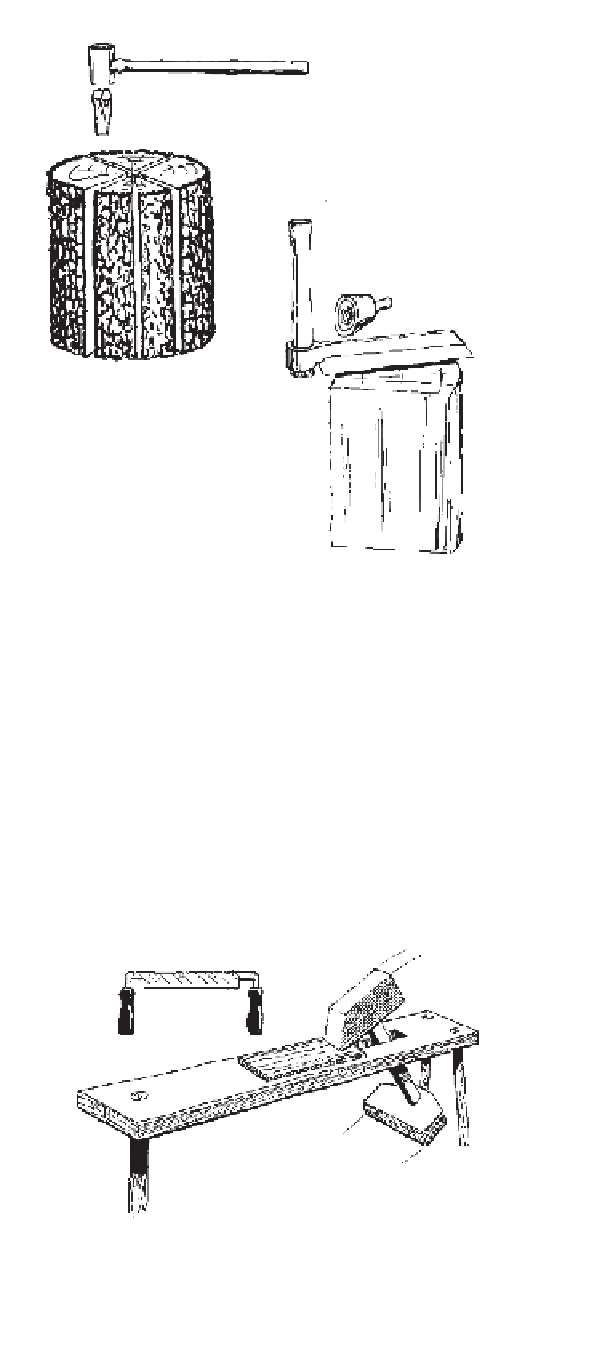Civil Engineering Reference
In-Depth Information
be painted eventually, after the shine is gone. Eventu-
ally, you'll need to seal or caulk each nail head when
the lead or plastic washer fails. Standing-seam metal
leaves no nail heads to the weather.
Riving Shakes
Wood Shakes
Shingles are sawn or cut; shakes are split or riven. If
you split your own, good luck, and tell us how it came
out when you finally finish. I'm a pretty fast hand at
riving shakes, but I cannot compete with the price of
lumberyard shakes or shingles. With practice, a wiry
individual can split several hundred shakes a day from
prime timber, but
that
is precisely the biggest hurdle.
The settlers used cedar, oak, chestnut, or cypress if
they were far enough south. That virgin growth was
fine, but today you're hard-pressed for good, sizable,
clear wood. It must have no knots, be straight, be two
feet or more in diameter, and be close grained.
Say you do have a load of two-foot-long oak blocks.
Red oak is the easiest of the oaks to split, but not the
most durable. You quarter the blocks, using a sledge-
hammer and wedges. Then split these in two and you
have eight very tall pie slices. Split off the point at the
heart, and the sapwood and bark, leaving maybe
eight inches or, if the block is big enough, maybe
wider. Now use a froe, an L-shaped tool, to split the
shakes along the radial split lines from the heart. That
means each shake is a little thicker on the outside, but
it's also the only way to do it. The old-timers dressed
these with a drawknife on a shaving horse.
Drive the froe with a hardwood mallet, b inch or
c inch from the edge of the pie slice. Or split the block
in the middle, over and over till you have all shakes.
Wedge the block into something like the forks of a
splitting or riving horse and pry off the shake with the
froe handle. With practice you'll learn that prying one
way runs the split in and the other runs it out. At first
you'll be lucky if the split gets all the way to the bot-
tom without running out. If this keeps happening and
you're getting a narrow top and wide bottom to your
block, turn the bottom up and work on that end for a
while.
You can split shakes green or seasoned; there are
craftspeople who insist that only one or the other will
work. Just be sure they season before you nail them
The split shake, or any other piece of wood to be shaved with the
drawknife, is clamped in place with foot pressure. The woodworker
sits on the shaving horse and pulls the drawknife toward him.





